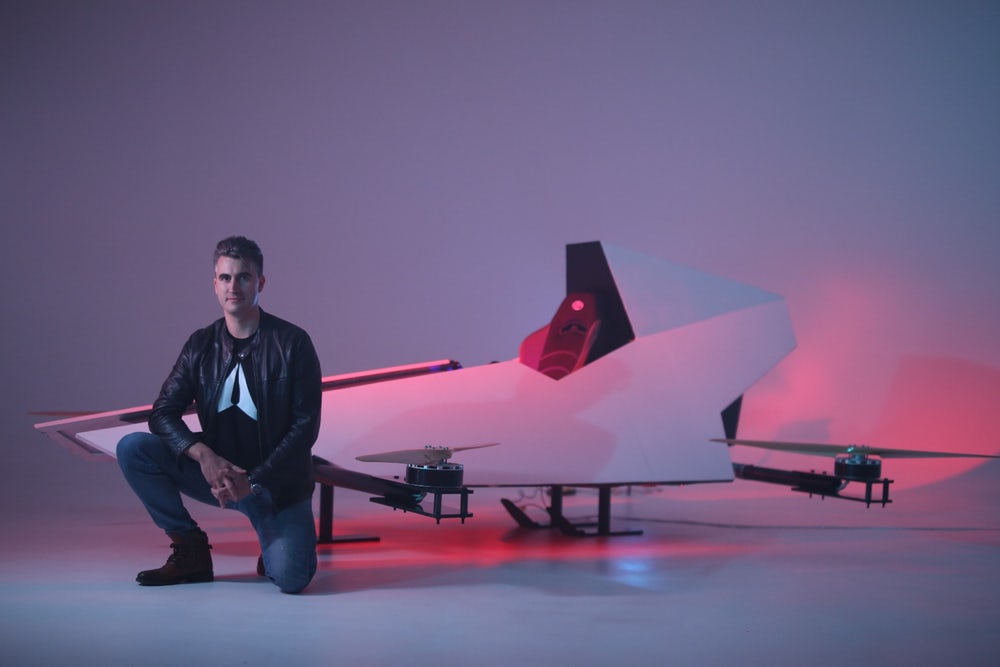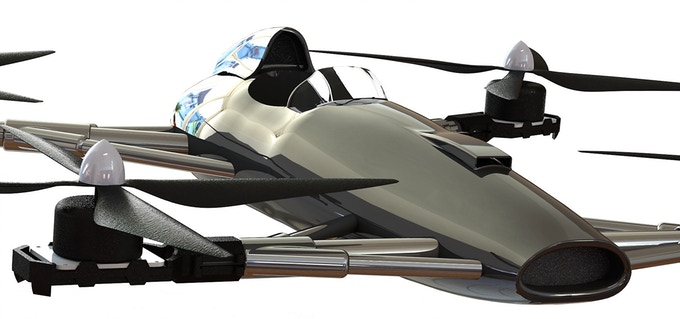When transport pioneers get serious, they go racing – that’s true of cars, motorcycles, boats and aircraft. So for Aussie entrepreneur Matt Pearson, the obvious way to improve the technology of flying cars is to race them.
Pearson’s company Alauda (a type of lark) is working on what he calls the Airspeeder, a cross between a 1960s Lotus 25 and a quadcopter drone with a seat for a human pilot.
The first Airspeeder, the Mark 1, is to have a top speed of 115mph, be powered by four 50kW electric motors and have the same lithium-ion battery at a Tesla Model S. The fuselage is constructed from aerospace grade aluminium with carbon-fibre bodywork. It will weigh 120kg empty and have a power to weight ratio of 1.66.
First flight of the Airspeeder is scheduled for 2018, followed by a head to head race in the Australian desert and a full championship in 2020.

Matt Pearson with the first mock-up Airspeeder. Top: what the race Airspeeder will look like. Retro F1 looks with cutting edge drone technology. Images: Alauda
Pearson said, “It’s just time the world had flying cars. Racing will push the technology like nothing else. It’s not enough to build the speeder: we have to build the sport. We want to bring the excitement and values of Formula 1 to the sky.”
Alauda is currently raising money via a Kickstart campaign: https://tinyurl.com/airspeeder
Imagine two or more Airspeeders barrelling into the first turn after the start… brings a whole new meaning to ‘cutting up’ a rival.














1 comment
When close-formation helicopters get too close to each other, it’s usually fatal for the occupants, as has sadly occurred only last week in France.
When are the manufacturers of aspirational designs based, fundamentally, on rotor-lift drones scaled-up, that the rotor or propulsor tips will need to be shrouded, to satisfy insurance cover providers that the lack of an on-board human pilot will not lead to a pedestrian walking into those blade tips when starting up, powering-up for take-off, or after landing? And which rich man’s child will be the first to run towards these scythes?